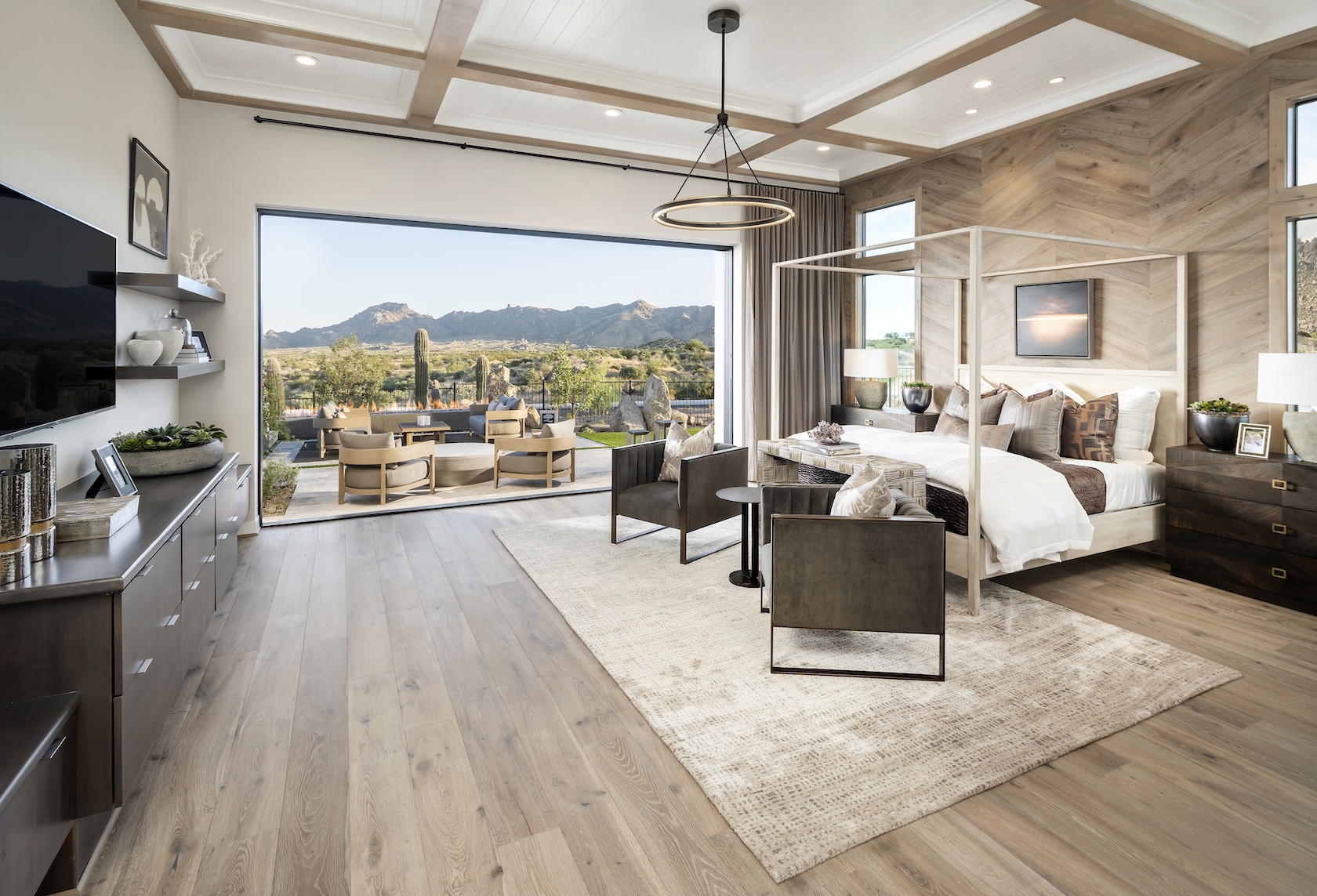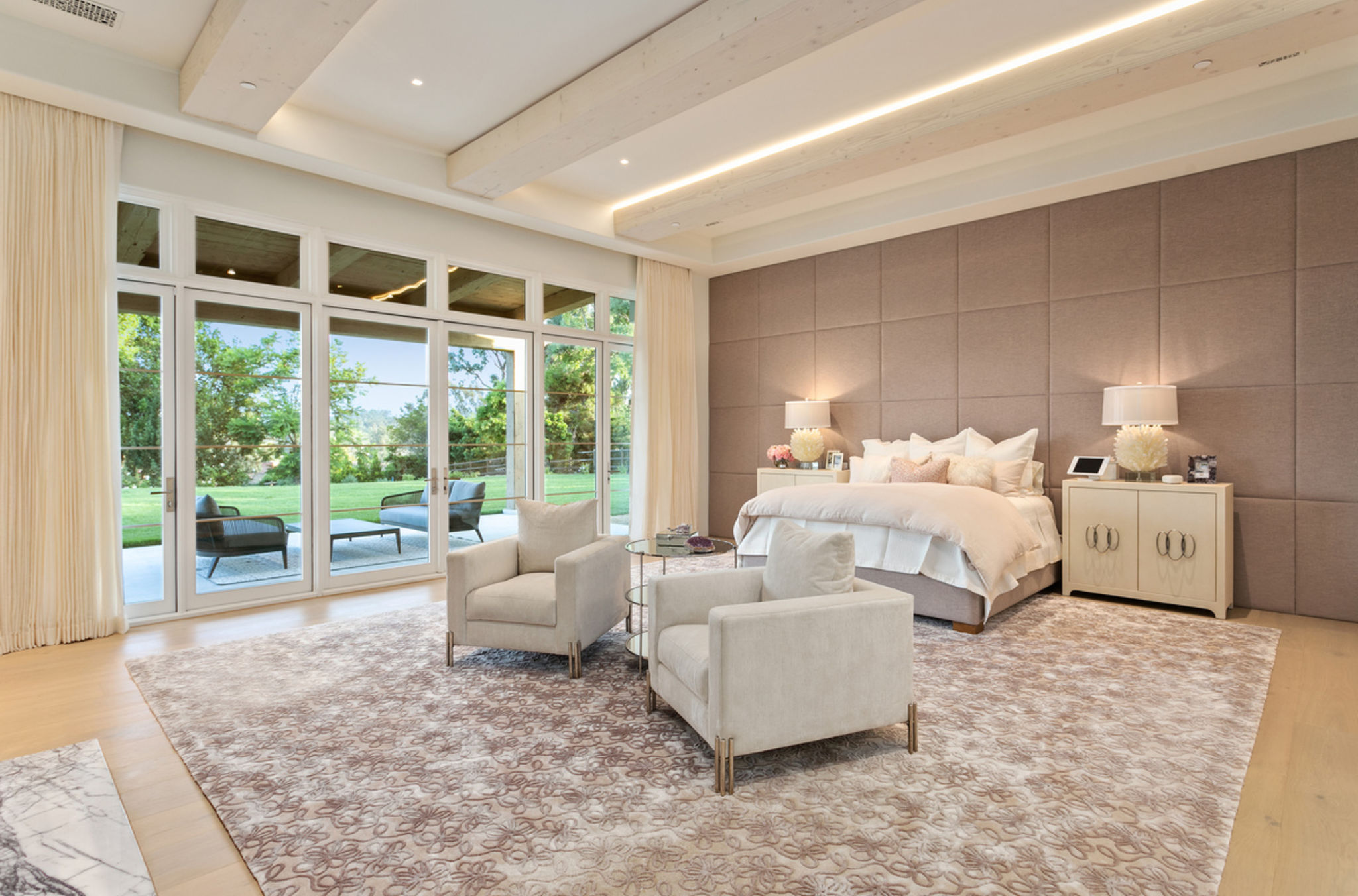Maximizing Space and Functionality: Bedroom Ideas For Large Rooms

A large bedroom presents a fantastic opportunity to create a truly personalized and functional sanctuary. Instead of feeling overwhelmed by the vast space, consider dividing it into distinct zones that cater to your specific needs and preferences. This approach allows you to maximize the area, making it both visually appealing and highly practical.
Creating Distinct Zones
Dividing a large bedroom into zones can enhance its functionality and create a sense of order. Each zone can be designed to serve a specific purpose, allowing you to optimize the space for different activities.
- Sleeping Area: This is the central focus of the bedroom, and it should be designed for relaxation and comfort. A plush bed, a cozy headboard, and soft lighting create a welcoming ambiance. Consider placing the bed away from windows to minimize distractions and ensure a peaceful sleep environment.
- Reading Nook: A dedicated reading nook provides a tranquil escape for indulging in your favorite books. Position a comfortable armchair or a plush sofa in a quiet corner, accompanied by a floor lamp for optimal lighting. A small bookshelf nearby allows you to keep your literary collection within reach.
- Workspace: For those who work from home or need a dedicated space for studying, a workspace is essential. A desk with ample storage, a comfortable chair, and good lighting are key components. Position the workspace near a window to enjoy natural light and a view.
- Dressing Area: A dressing area provides a designated space for getting ready in the morning. Consider incorporating a full-length mirror, a vanity table with storage, and ample hanging space for clothes. You can also include a comfortable seating area to help you put on your shoes or accessorize.
Bedroom Layout with Multiple Zones
Imagine a spacious bedroom with a plush king-size bed positioned against the far wall, creating a calming sleeping area. To the left of the bed, a custom-built bookcase separates the sleeping area from a cozy reading nook, complete with a plush armchair and a floor lamp. On the right side of the bed, a large window floods the room with natural light, illuminating a dedicated workspace featuring a sleek desk, a comfortable chair, and ample storage. Finally, a freestanding wardrobe with mirrored doors serves as a divider between the workspace and a dressing area, which features a vanity table with a large mirror and ample storage for accessories.
Utilizing Furniture to Define Zones, Bedroom ideas for large rooms
Furniture plays a crucial role in defining zones within a large bedroom. Strategically placed pieces can create distinct areas without the need for walls or partitions.
- Sofas and Armchairs: A comfortable sofa or armchair can be used to create a cozy reading nook or a seating area for conversation. Position them strategically to define a specific zone within the room.
- Bookshelves and Cabinets: Bookshelves and cabinets can serve as both storage solutions and visual dividers. Placing a bookshelf between the sleeping area and a workspace can create a sense of separation while still allowing light to flow through the room.
- Rugs: Rugs are an effective way to define zones and create visual interest. Using rugs of different sizes and patterns can delineate specific areas within the bedroom, such as the sleeping area, the reading nook, and the workspace.
Enhancing Zone Separation with Rugs and Lighting
Rugs and lighting are powerful tools for enhancing zone separation and creating distinct moods within a large bedroom.
- Rugs: Placing a rug under each zone can visually define the space and create a sense of intimacy. Choose rugs in different colors, textures, and patterns to reflect the mood of each zone. For example, a soft, plush rug might be suitable for the sleeping area, while a more patterned rug could be used for the workspace.
- Lighting: Lighting plays a crucial role in creating ambiance and defining zones. Use different types of lighting to highlight each area. For example, a dimmer switch for overhead lighting in the sleeping area can create a relaxing atmosphere, while a task lamp with adjustable brightness is ideal for the workspace. Consider using accent lighting to highlight artwork or other decorative elements within each zone.
Personalizing Your Space

Your bedroom should be a sanctuary, a reflection of your unique personality and interests. It’s a place to unwind, recharge, and express yourself. By incorporating personal touches, you can create a space that feels truly yours and fosters a sense of comfort and tranquility.
Showcasing Your Passions
Transforming your bedroom into a personalized haven begins with showcasing your passions and interests. This can be achieved through various methods, including:
- Displaying Travel Souvenirs: Imagine a wall adorned with colorful maps, framed postcards from your favorite destinations, or miniature souvenirs from your travels. This creates a visual narrative of your adventures and sparks memories of cherished experiences.
- Celebrating Your Hobbies: If you’re an avid reader, dedicate a cozy corner to your book collection, complete with a comfortable armchair and a reading lamp. For art enthusiasts, display your favorite paintings or sculptures on the walls, creating a personal gallery within your bedroom.
- Integrating Your Artwork: Whether you’re a painter, photographer, or a collector of art, incorporate your creations into your bedroom design. Hang your artwork on the walls, display it on shelves, or even create a dedicated gallery space.
Crafting a Unique Atmosphere
Color palettes and textures play a crucial role in establishing a unique and inviting atmosphere.
- Color Palettes: Consider using calming colors like blues, greens, and purples to promote relaxation and tranquility. If you prefer a more energetic vibe, incorporate vibrant hues like oranges, yellows, and reds.
- Textural Variety: Introduce different textures to create visual interest and tactile appeal. Combine soft, plush fabrics like velvet or chenille with rougher textures like woven baskets or natural wood accents.
